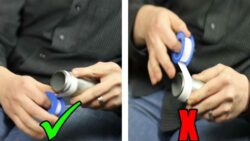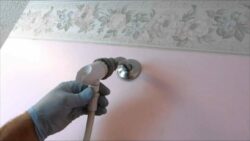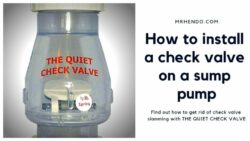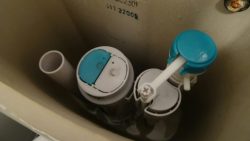In the article titled “How to Unclog a Bathtub Drain – The Right Way,” you will learn a step-by-step process to remove a clog in your bathtub and save money on plumber services. This clog is often caused by hair and debris, and with the use of basic tools such as needle nose pliers and a screwdriver, you can fix most clogs within 10 minutes or less. The process involves removing the overflow valve and screen to access and remove the clog. By following these guidelines, you can effectively handle the issue and prevent soap scum buildup in your bathtub drain.
The author, Jeff from Home Repair Tutor, provides a detailed demonstration and thorough explanation to guide you through each step. He emphasizes the importance of precautionary measures, such as placing a paper towel over the drain when removing screws and ensuring the cleanliness of the plunger and overflow valve. Additionally, he recommends testing the drain by running water for a few minutes to ensure proper drainage. By following these instructions, you can successfully unclog your bathtub drain and save money on professional services.
How to Unclog a Bathtub Drain: The Right Way
Maintaining a clean and functioning bathtub drain is essential for a comfortable and hassle-free bathing experience. If you’re experiencing water backing up in your bathtub, chances are you have a clog. The most common culprits of bathtub drain clogs are hair and other debris. Fortunately, with the right tools and a little know-how, you can save yourself the expense of hiring a professional plumber.
Step 1: Prepare for the Unclogging Process
Before you begin unclogging your bathtub drain, it’s important to make some preparations. Start by placing a paper towel over the drain to prevent any small screws or debris from falling down. Next, using a screwdriver, remove the screws from the overflow valve. Take care not to lose them, as they will be needed later in the process.
Step 2: Remove the Lever and Plunger
To access the clog, you’ll need to remove the lever and plunger from the bathtub drain. Carefully pull out the lever and the plunger, ensuring that you inspect the plunger for any hair or debris that may be causing the clog. If you notice any, remove it using needle-nose pliers.

Step 3: Remove the Screen and Clear the Clog
The next step involves removing the screen from the drain. Lift the screen out and set it aside. Now, using the needle-nose pliers, carefully clear the clog from the drain. Be cautious not to push the clog further down the drain; instead, try to pull it out.
Step 4: Discard the Hair and Clean the Area
After successfully removing the clog, collect all the hair and debris in a bag for proper disposal. This will prevent any future clogs from occurring. Once the area is clear, clean it thoroughly using paper towels to remove any remaining residue.
Step 5: Test the Drain Functionality
Now that the clog is removed and the area is clean, it’s important to test the functionality of the drain. Run water into the bathtub for 1-2 minutes to check if it drains properly. If the water drains smoothly, you can further ensure its functionality by running water for an extended period of 5 minutes. This step will provide extra assurance that the clog has been completely eliminated and the drain is functioning as it should.
Step 6: Reassemble the Drain Components
With the functionality of your unclogged bathtub drain confirmed, it’s time to reassemble the components. Start by placing the screen back into the drain. Ensure it fits securely and sits flush with the bathtub surface. Next, tighten the screws from the overflow valve, taking care not to use excessive force. Over-tightening may cause damage to the drain components.
Step 7: Clean the Overflow Valve and Plunger
To maintain a clean and efficient bathtub drain, it’s important to clean the overflow valve and the plunger. Remove any grime or hair that may have accumulated in the overflow valve. Use a toothbrush or toilet paper to clean the plunger thoroughly. Make sure the plunger is completely clean before inserting it back into the waste pipe.
Step 8: Check for Holes and the Washer
Inspect the holes that hold the trim kit in place. Ensure they are clean and free from any debris or obstructions. Additionally, check the condition of the washer that prevents water from leaking behind the bathtub. Ensure the washer is in good condition and properly positioned against the back of the bathtub.

Step 9: Secure the Overflow Valve
To ensure a proper seal and prevent any potential leaks, secure the overflow valve in place. Align the screw with the hole and the overflow pipe, and tighten the screw until it is snug. Avoid overtightening, as it may cause damage to the valve or the pipe.
Step 10: Final Check and Conclusion
After completing all the previous steps, it’s time for a final check to evaluate the functionality of your unclogged bathtub drain. Run water once again for a few minutes to ensure that it drains properly without any issues. By following these simple steps, you’ve successfully saved both money and time by performing the unclogging process yourself.
In conclusion, unclogging a bathtub drain doesn’t have to be a daunting task. With the right tools and a systematic approach, you can easily tackle this project and save yourself the expenses of hiring a professional. Remember to follow each step carefully, inspect the components for any damage, and keep the area clean to prevent future clogs. By taking matters into your own hands, you can enjoy a clean and fully functional bathtub drain without breaking the bank.





